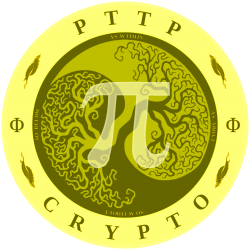EPILEPSY
Epilepsy is part of a group of conditions that is characterised by recurring seizures with or without spasms. Therapies with cannabis or based on cannabis have a proven positive effect on several types of epilepsy by means of different biological mechanisms. Around 60% of all epileptic seizures are combined with spasms: fast, involuntary contractions of the muscles that cause the whole body to shake and shock uncontrollably. The most common type is the tonic-clonic seizure where the uncontrollable shacking will start after a short period of paralysis. Overactive nerve cells in the brain are the cause of the epileptic seizures, both with and without spasms; intense and ongoing seizures can damage brain tissue – this applies most to young children who’s brain is still in development.
Research shows the endocannabinoid system has a big impact on the duration and frequency of the seizures – some researchers are even convinced that epilepsy can be a direct result of a imbalance in the endocannabinoid system (a condition called clinical endocannabinoid deficiency), which can be caused by brain damage, infection or genetic predisposition. The most common cause of the seizures with and without spasms is excessive stimulus of the nerve cells in the brain, and the type of epilepsy determines which part of the brain is affected. For healthy people, the endogene cannabinoids anandamide and 2-AG play an essential role in regulating the level of nerve stimulation and therefor they decrease the risk of experiencing seizures. For people with a malfunctioning endocannabinoid system however, cannabis and therapies based on cannabis can essentially fight the cause of epilepsy and offer a neuro-protective effect that will decrease the intensity and frequency of the symptoms.
Epilepsie behoort tot een groep van aandoeningen die wordt gekenmerkt door steeds terugkerende aanvallen met of zonder stuiptrekkingen. Therapieën met cannabis en op basis van cannabis hebben een bewezen gunstig effect op verschillende soorten epilepsie via diverse biologische mechanismen.
Circa 60% van alle epileptische aanvallen gaat gepaard met stuiptrekkingen: snelle, onwillekeurige samentrekkingen van de spieren die het hele lichaam onbeheersbaar laten schudden en schokken. Het meest voorkomende type is de tonisch-klonische aanval waarbij het onbeheersbaar schudden begint na een korte periode van niet kunnen bewegen. Overactieve zenuwcellen in de hersenen veroorzaken de epileptische aanvallen, zowel die met als zonder stuiptrekkingen; bij hevige en aanhoudende aanvallen kan het hersenweefsel beschadigd raken – dit geldt met name voor jonge kinderen waarvan de hersenen nog steeds in ontwikkeling zijn.
Er wordt steeds meer onderzoek gedaan naar het endocannabinoïdesysteem en daarbij blijkt dat het een belangrijke invloed heeft op de duur en de frequentie van aanvallen – sommige onderzoekers zijn er zelfs van overtuigd dat epilepsie het gevolg kan zijn van een verstoorde balans van het endocannabinoïdesysteem (een aandoening die soms ook wel klinisch endocannabinoïdegebrek wordt genoemd), iets dat kan worden veroorzaakt door hersenletsel, infecties en genetische aanleg.
De meest voorkomende oorzaak van aanvallen met of zonder stuiptrekkingen is overmatige prikkeling van zenuwcellen in de hersenen, waarbij het type epilepsie bepaalt welk gebied in de hersenen wordt aangetast. Bij gezonde patiënten spelen de endogene cannabinoïden anandamide en 2-AG een essentiële rol bij het reguleren van de mate van zenuwprikkeling en verlagen ze de kans op het ontstaan van een aanval. Daaruit volgt dat bij patiënten met een slecht werkend endocannabinoïdesysteem, cannabis en therapieën op basis van cannabis daadwerkelijk de oorzaak van de epilepsie kunnen bestrijden en een neuroprotectief effect leveren dat de ernst en de frequentie van de symptomen vermindert.



